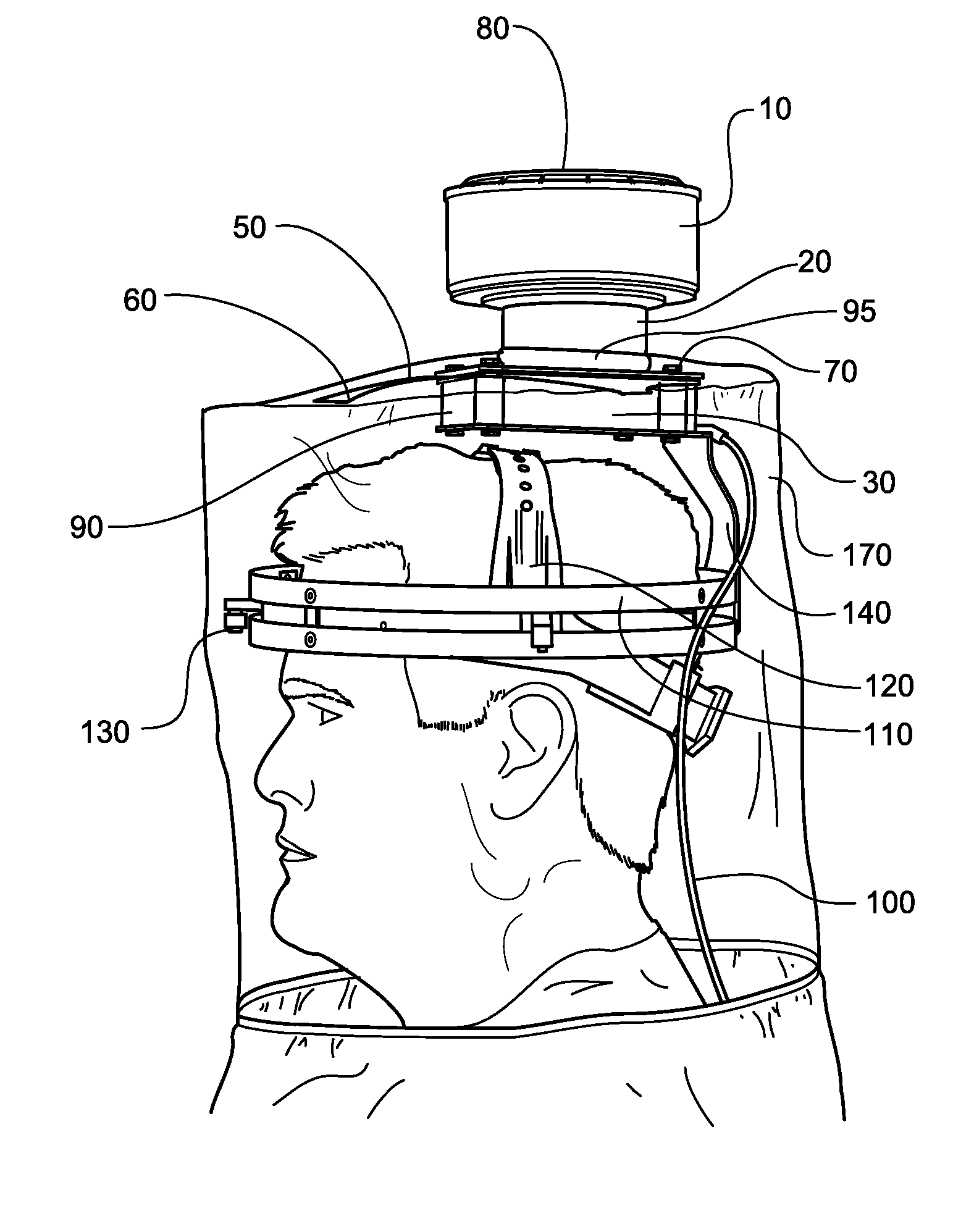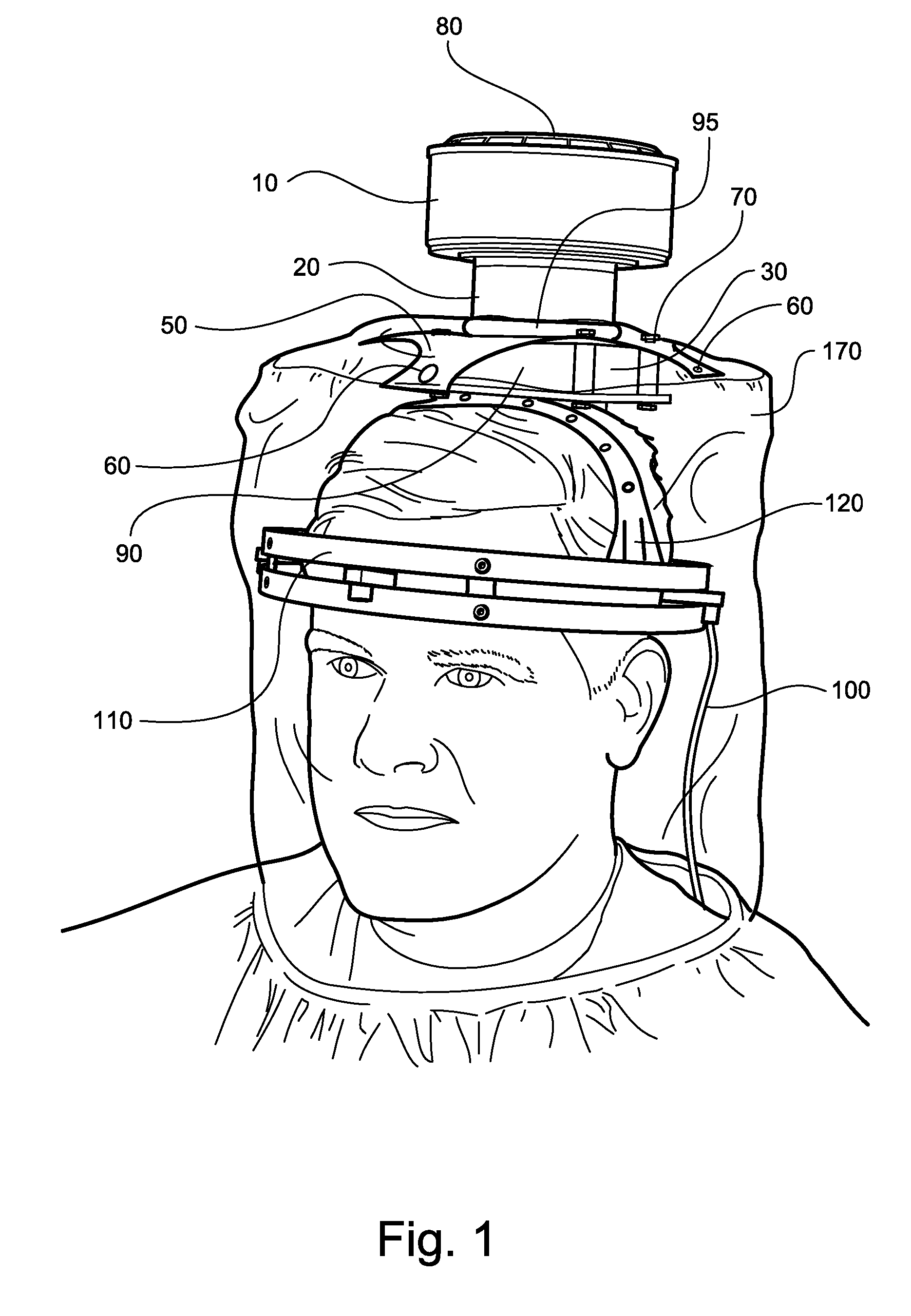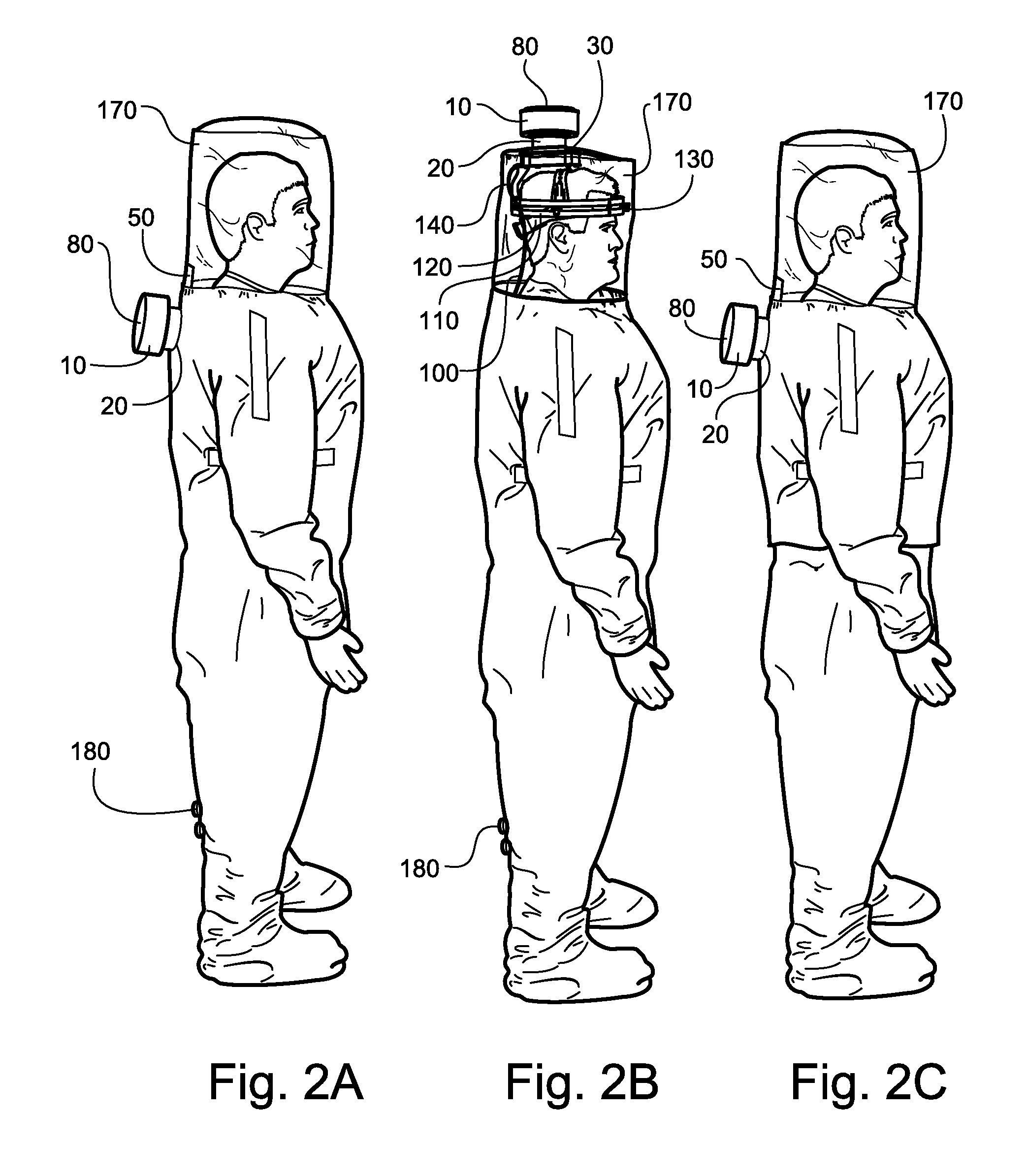High Air Flow Powered Air Purifying Anti-Contamination Device
a high-flow, anti-contamination technology, applied in the field of anti-contamination suits, can solve the problems of reducing the service life of the suit, so as to achieve the effect of preventing fogging of the suit visor or hood, reducing the cost of decontamination or disposal, and flexible addition of additional components
- Summary
- Abstract
- Description
- Claims
- Application Information
AI Technical Summary
Benefits of technology
Problems solved by technology
Method used
Image
Examples
Embodiment Construction
[0033] It is to be understood by a person having ordinary skill in the art that the present discussion is a description of exemplary embodiments only, and is not intended as limiting the broader aspects of the present invention. The following example is provided to further illustrate the invention and is not to be construed to unduly limit the scope of the invention.
[0034] The anti-contamination suit garment of the present invention can be any variety of protection systems that surrounds the worker and protects him from a contaminated environment. Also included in the invention is any partially protective suit such as a solo hood protective garment. The suit can likewise be made of many materials as discussed supra. In the preferred embodiment, the suit utilizes a clear “bubble hood” made of clear PVC. Likewise, the remainder of the suit, whether one or two pieces, is also made of PVC though the invention is not limited to any one material.
[0035] Inside the suit is the blower unit...
PUM
 Login to View More
Login to View More Abstract
Description
Claims
Application Information
 Login to View More
Login to View More - R&D
- Intellectual Property
- Life Sciences
- Materials
- Tech Scout
- Unparalleled Data Quality
- Higher Quality Content
- 60% Fewer Hallucinations
Browse by: Latest US Patents, China's latest patents, Technical Efficacy Thesaurus, Application Domain, Technology Topic, Popular Technical Reports.
© 2025 PatSnap. All rights reserved.Legal|Privacy policy|Modern Slavery Act Transparency Statement|Sitemap|About US| Contact US: help@patsnap.com



